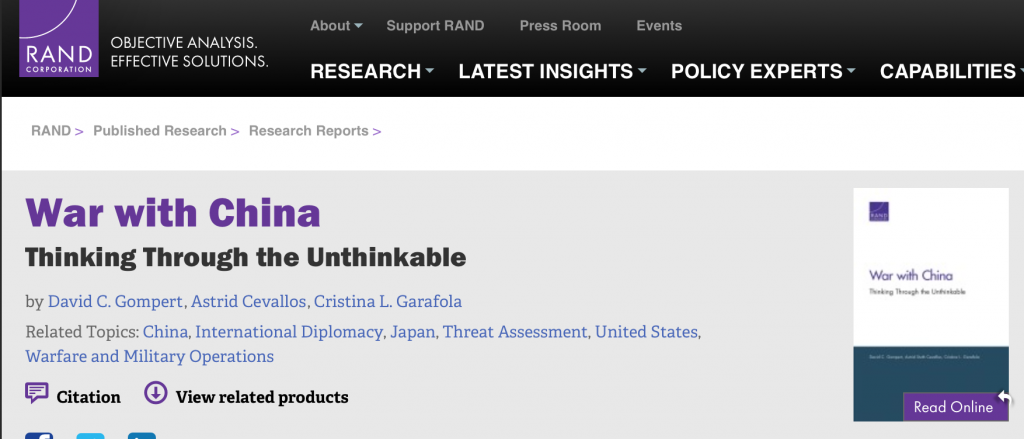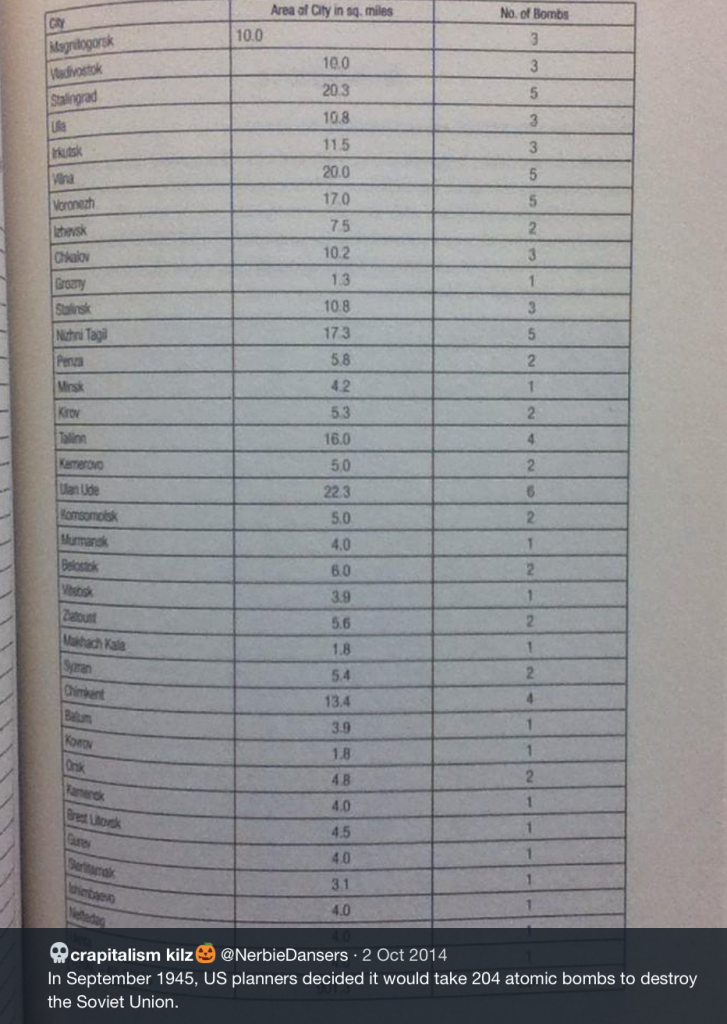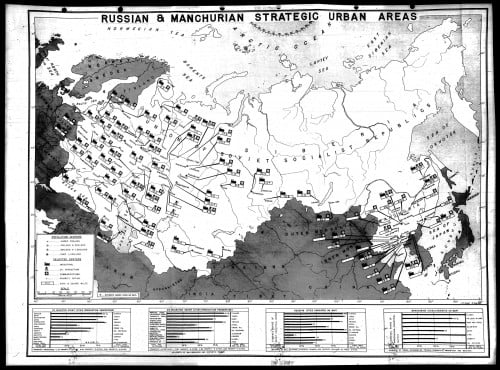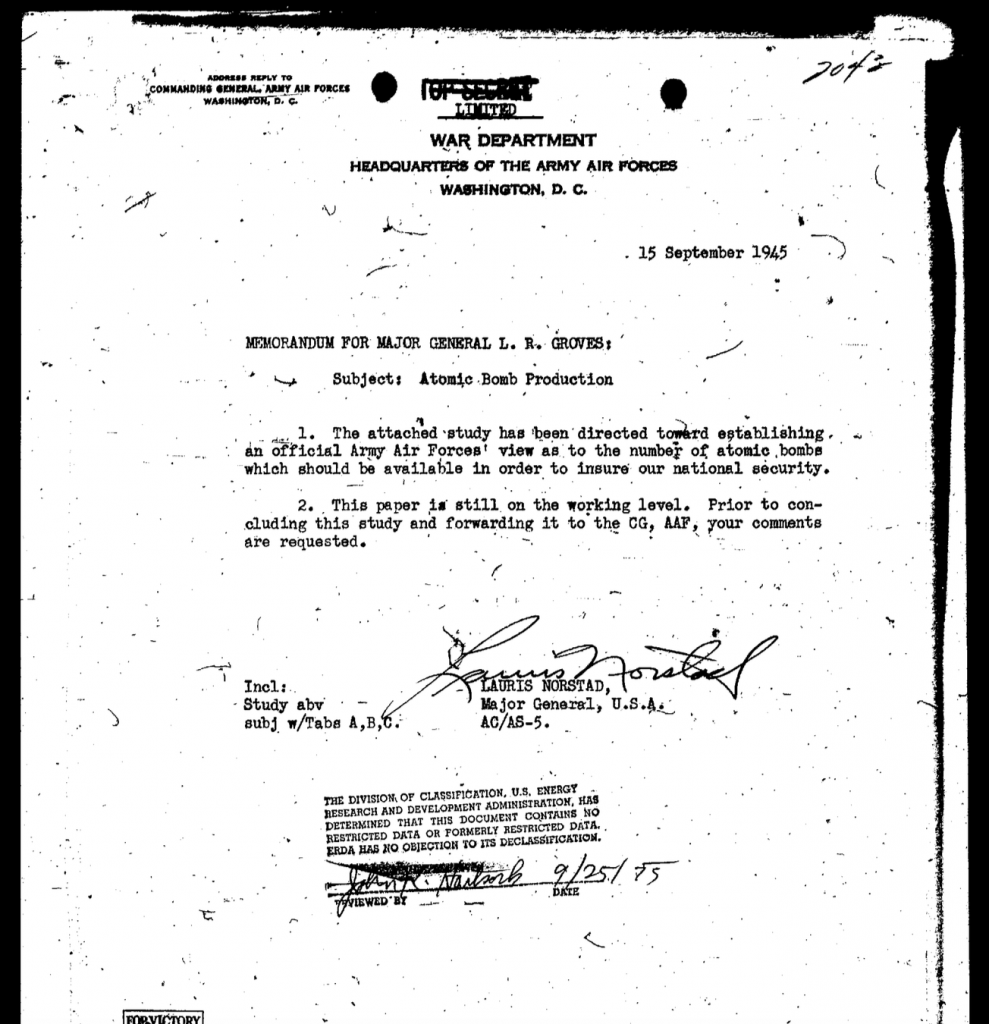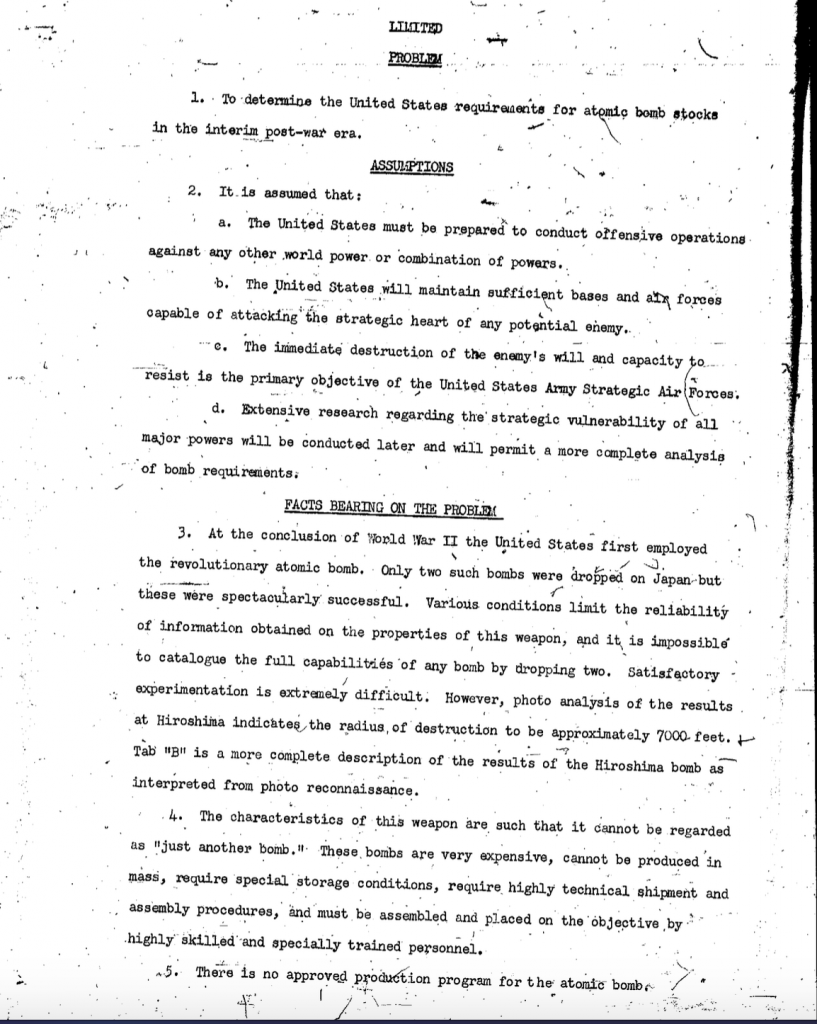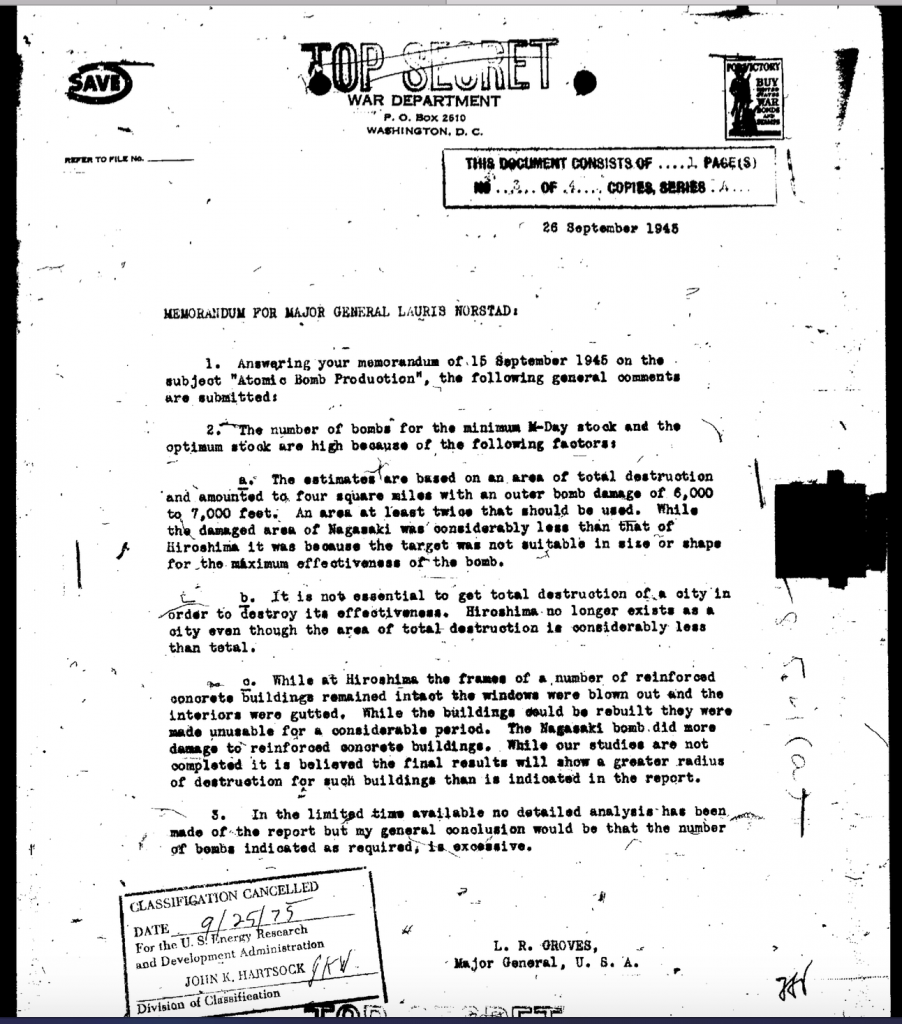Is the US Planning to Wage War on Russia and China?
Interview with Prof. Michel Chossudovsky
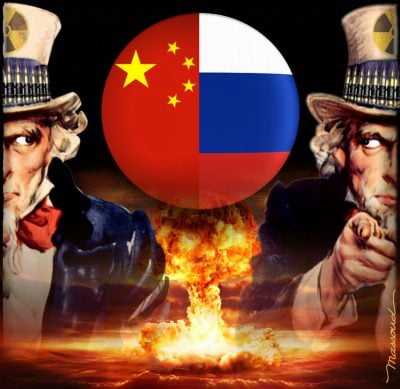
Listen to the interview with Prof. Michel Chossudovsky below.
This is Guns and Butter.
“The Rand Corporation, on contract with the US Army, which commissioned a report examining a war with China. Now, this is called “War With China: Thinking Through the Unthinkable.” The irony of this is that what they examined in this report is whether “we” could actually win a war on China.
Essentially, this is a simulation of a war between the United States and China and it comes up with the conclusion that we’re going to win it. That’s diabolical and it’s criminal. What has China done to the sovereignty of the United States?”
The study (published in 2015) entitled War with China: Thinking the Unthinkable was commissioned by the US Army.
I’m Bonnie Faulkner. Today on Guns and Butter, Michel Chossudovsky.
Today’s show: Is the US Planning to Wage War on Russia and China? Michael Chossudovsky is an economist and the Founder, Director and Editor of the Center for Research on Globalization, based in Montreal, Quebec. He is the author of 11 books including The Globalization of Poverty and the New World Order, War and Globalization: The Truth Behind September Eleventh, America’s War on Terrorism and The Globalization of War: America’s Long War Against Humanity. Today we concentrate on the global military agenda, on the evolving restructure of geopolitical alliances, the Nuclear Posture Review, the purpose of the Manhattan Project, and the dangers of nuclear war.
BONNIE FAULKNER: Michel Chossudovsky, welcome again.
MICHEL CHOSSUDOVSKY: Delighted to be on Guns and Butter.
BONNIE FAULKNER: President Trump’s surprise announcement that the US is leaving Syria caught most people in and out of government by surprise and led to the resignation of Secretary of Defense Mattis. Two thousand US troops will be withdrawn from Syria. What is your assessment of this move?
MICHEL CHOSSUDOVSKY: First of all, that withdrawal in terms of US forces is trivial. The United States has operated in Syria by financing and supporting tens of thousands of jihadists with the support of Saudi Arabia and up to a certain point also Turkey, although Turkey has a different agenda. Within those jihadist forces you have covert, special forces from a number of Western countries.
I don’t view this necessarily as a major shift in the US foreign policy, but it’s also the result of the fact that the Russians are playing a key role, Turkey is playing its own role with a tacit alliance with Russia and Iran, and I think that what now the United States is doing is – it’s not a retreat necessarily, it’s a strategic withdrawal with a view eventually that its allies, particularly Saudi Arabia and Israel, might play a more active role. And we see that Israel is actually involved in routine bombings of Syria.
BONNIE FAULKNER: You have long maintained that Israel’s defense forces are integrated into the US military command structure and as such do not act alone. Does this then mean that when the Israeli air force strikes Syria, as was done over Christmas, that the US has signed off on these attacks?
MICHEL CHOSSUDOVSKY: Well, if you look at the structure of military alliances and agreements reached both with NATO as well as with the Pentagon, Israel is a de facto member of NATO, not de jure but de facto. There was in fact an agreement signed way back. It was, I think, about 15 years ago.
Now, as far as air defense systems is concerned and major theater operations, Israel will never act on its own. It will act in terms of piecemeal military attacks, bombings and so on, but ultimately Israel is integrated into the US-NATO structure.
Historically, the United States has always used Israel as an outpost in the Middle East. We recall during the Bush administration that Dick Cheney intimated that maybe Israel would attack Iran on our behalf. In other words, he actually intimated they will do the dirty work for us but in effect, an attack on Iran cannot take place without the green light from the Pentagon.
I think that we’re at a very dangerous crossroads in our history because there’s an evolving situation in the Middle East. There’s a shift in alliances. There’s a global military agenda. Let’s bear in mind that since 2001 we have had a whole sequence of military operations, some of them conducted by US allies, but invariably Washington has been behind the wars in Afghanistan, Syria, Libya, Lebanon, Yemen, Somalia, Sudan and so on, and of course, Ukraine. So essentially what is unfolding in 2019 – in fact, it has been unfolding for a long period of time – is a global military agenda. It’s the globalization of war.
Coupled with this are military plans to attack Russia and China with nuclear weapons. Now, I mention this because these military plans are in the public domain. You can go and read them. The Rand Corporation has actually published its own plan, a few years back, and more recently we have another plan to that effect.
All this is, of course, coalescing and it’s coupled with trade wars, financial warfare sanctions. The nature of warfare has certainly progressed since the 1970s and ‘80s, and we have nonconventional forms of warfare. Some people call it hybrid warfare, where you destabilize a country by undermining its financial structure. That’s what’s happening in Venezuela. You manipulate the foreign exchange market and then Venezuelan bolivar collapses, triggering hyperinflation. That is something which has been on the drawing board of US foreign policy for years. But what I’m trying to emphasize is that there is a global military agenda. Of course, in addition to the wars in Syria, Iraq, Afghanistan you have US war plans against China and Russia.
BONNIE FAULKNER: President Trump announced his decision to remove US troops from Syria shortly after having spoken twice to Turkish President Recep Erdogan. The mainstream news is reporting that Erdogan assured Trump that Turkey could finish off ISIS in Syria and that the US forces were “hindering” Turkey. Trump is reported to have said, “Okay. It’s all yours. We are done.” Of course, this reporting is based on the false narrative that the US was in Syria fighting ISIS. What do you think is behind Trump’s conversation with Erdogan?
MICHEL CHOSSUDOVSKY: You know, Erdogan has his own agenda and at the same time, Erdogan is sleeping with the enemy. In other words, they have now a coalition with Russia and Iran. In fact, these are cross-cutting coalitions. Turkey is a heavyweight in NATO. In terms of military might it’s the second largest, in terms of conventional forces, after the United States. And it’s allied, of course, to the United States. But then on the other hand, Turkey is opening up to Iran and Russia, and that is a situation which evolved after the failed coup against Erdogan a few years back. So there’s been a major shift in geopolitical relations.
But I think the United States realizes, first of all, that Turkey’s agenda in northern Syria is to fight the YPG, in other words, the Kurdistan separatist movement. I think that what they’re doing now is simply – well, because the YPG at one point was supported by the US, so you don’t want to have Turkey fighting your proxy forces. And as a result of that contradictory situation in northern Syria, the United States has decided to withdraw and let Turkey consolidate in northern Syria. As to whether that will occur is very uncertain because now the YPG, which previously had the support of the United States, is negotiating with the Damascus government and with the Russians.
BONNIE FAULKNER: As well, the president is saying that he wants to remove US troops from Afghanistan. What is the strategy behind withdrawing US troops from these countries? Do these announced troop withdrawals indicate a move away from war or rather the privatization of military actions via Blackwater and other private militias? What do you think?
MICHEL CHOSSUDOVSKY: First of all, as far as Afghanistan is concerned, this withdrawal, again, is not really a withdrawal; it’s a restructuring of the conflict. But what’s important to bear in mind is that the insurgency, which is led by the Taliban, is gaining ground and controls about 50% of the country.
The Russians have an interest in Afghanistan and, of course, so do the Chinese, which have a common border with Afghanistan and they also have significant economic interests in Afghanistan. But I don’t see, again, that the United States is actually going to withdraw.
We have to bear in mind that Afghanistan is a US-NATO agenda and we have to go back to 2001 to understand why. Well, some people forget that the United States went into Afghanistan essentially because Afghanistan attacked America on 11 September 2001. We don’t know that because that narrative was never actually portrayed by the media, but legally, the decision taken by NATO was that America had been attacked from abroad by a foreign power – which was absurd; there were no Afghani jetfighters in the skies of New York that day – and consequently under Article 5 of the Washington Treaty Collective Security Agreement an attack on one member of NATO is an attack on all members of NATO, it’s an attack of self-defense. And then we go and attack Afghanistan some thousands of miles away, and that happens 28 days later. You don’t prepare a large-scale theater war in 28 days.
But people don’t remember why the United States actually invaded Afghanistan on the 7th of October 2001. It was in response to the 9/11 attacks and, of course, those 9/11 attacks were allegedly – I don’t want to get into a discussion on 9/11 – allegedly they were conducted by al Qaeda led by Osama bin Laden. And it just so happens, of course, that in the course of the month of September and even early October, the Afghan government said, “If you want to negotiate the extradition of Osama bin Laden, we’re prepared to do so,” etc etc. Bush said, “No. We don’t negotiate with terrorists.” Of course, they didn’t want to negotiate because that war was planned well in advance of September 11, 2001.
Now, bear in mind, what were the real reasons for invading Afghanistan? Well, Afghanistan is a geopolitical hub which links central Asia to south Asia. Historically, it’s occupied a very important position, but it also has tremendous resources. They’re the mineral riches. It’s one of the largest producers of lithium, which is used to make batteries. But more significantly, it produces approximately more than 90% of opium supplies to Western markets, of course, used to make grade 4 heroin. And that’s a multi-billion dollar undertaking.
It’s a war of conquest, so to speak. The US military controls the opium trade – incidentally, the production of opium in the course of that period has gone up about 30 times, and in turn, there’s tremendous mineral reserves. And then on the other hand, China’s involved, so that from the US point of view, Afghanistan is the hub that they want to keep under their control to keep the Chinese and the Russians out of that strategic hub in central Asia.
They’re failing, because the Chinese not only have significant mining interests in Afghanistan, they’re also in the process of building a road linking the two countries and so on.
BONNIE FAULKNER: Let’s talk about what you have referred to as the global military agenda and the structure of alliances in the Middle East. There has been a shift or rebalancing of geopolitical alliances. The situation seems fluid. What can be said about the alliance between Turkey, a NATO member, and Russia and Iran? This brings up the subject of an attack on Iran, which now does not seem probable at all.
MICHEL CHOSSUDOVSKY: First of all, let me address the issue of the broader military agenda. At present, we have several war theaters. The most important ones are, of course, Iraq, Syria – there’s still of course a US-NATO covert presence in Syria – Yemen is absolutely crucial. There’s a war in Yemen. Yemen is strategically located. It’s led by Saudi Arabia, which is acting on behalf of the United States. And then you have Somalia and of course Palestine and, as I mentioned earlier, the building up of NATO forces in Ukraine and the Black Sea Basin.
All of this is integrated into a more global military agenda with a regional command structure where the United States military has commands in different parts of the world. Central Command is for the Middle East, and then you have also the Pacific Command. China’s maritime borders are controlled by the US, or at least the US has a military presence in all these strategic waterways.
Now, that agenda, as you mentioned, in a sense is in a straightjacket because there are divisions within the Western military alliance. And not only Turkey, not only Turkey. There are different positions by the European members of the Atlantic Alliance. But the issue of Turkey is absolutely fundamental, because if Turkey has an alliance with Iran and Russia it’s going to be very difficult to wage a US-NATO led war on Iran.
At the same time, if we’re looking at alliances, which under present circumstances are exceedingly complex, we must underscore the fact that Turkey has also historically – and that goes back to the ‘90s – developed a very close relationship with Israel in the areas of both military and intelligence as well as joint military production. That alliance was in crisis at one point, but it’s still there.
And then there’s another element. Russia has established a relationship with Israel. There’s a large part of the Israeli population of Russian origin, and certainly that plays a role. But Vladimir Putin and Netanyahu have established a relationship. Some people view this as Russia sort of caving in to Israel against its Syrian ally, but I think it is part of a very carefully thought-out strategy of essentially creating weaknesses within the US-NATO structure. Because in a sense, Israel is also sleeping with the enemy, and there’s a bilateral relationship between Moscow and Tel Aviv, and that should be taken into account.
So we might way, yes, it is very difficult for the United States to wage war on Iran at this particular juncture because Turkey is sleeping with the enemy, and Israel is also sleeping with Turkey up to a point, which as well is sleeping with Iran and with Russia. So the structure of military alliances are not favorable to waging a US-NATO-Israel war on Iran.
We can learn from the lessons of history, particularly World War I, triple alliance, triple entente, that the structure of alliances played a very important role in the outbreak of war I. But here we are in the situation where we have cross-cutting alliances.
The Russians and the Chinese are very astute in that regard. They will establish alliances with the allies of the United States and this is a way also of undermining this military agenda, by making it very difficult on the part of Washington to actually wage a war – to wage a war on Iran. If NATO’s going to participate in that war they will have to have the endorsement of Turkey. So Turkey’s in bed with the enemy and Turkey’s also an ally of the United States and a member of NATO, and Israel is a firm ally of the United States but it also has some kind of joking relationship with Vladimir Putin. And all those things are part of a complex geopolitical structure.
And I should mention other things that are absolutely crucial. United States is losing its stranglehold in Pakistan and to some extent also in India. Why? Pakistan is now trading with China. It’s called the China Pakistan Economic Corridor, the CPEC. China’s investing in Pakistan. We’re talking about a nation of 150 million people.
Then, on the other hand, Pakistan and India are now full members of the Shanghai Cooperation Organization, which is the equivalent of NATO for the Russians and the Chinese. Officially, it’s not a military alliance but de facto it is. It’s China, Russia, several of the former Soviet republics, and now India and Pakistan have joined.
What this means is that the conflict between Pakistan and India is no longer under the helm of Britain or the United States. The colonial legacy has in a sense been shoved aside, because under the SCO, the Shanghai Cooperation Organization, Pakistan and India, which are members of the SCO, would have to resolve the border differences within the framework of the SCO. And they signed that agreement. So we’ve got a very different configuration in south Asia. Pakistan is aligned with China increasingly, India is sort of in-between but India is also wanted to purchase the S400 air defense system from Russia.
At the same time, I should mention Saudi Arabia has also established links with Russia. They want to buy the S400 and I suspect that the Khashoggi affair is ultimately linked to the fact that the current regime in Saudi Arabia is seeking some rapprochement with Russia and this is something that the United States wants to undermine through regime change. But that’s another kind of analysis that we’d have to look at.
But there you are. And if you look at what’s happening broadly in Eurasia, with the extension of Chinese influence – Chinese influence is not only in the Asia Pacific region; it extends into Africa, and it extends in to countries which were former colonies of Western countries and all of a sudden, the Chinese come in and start building bridges and roads.
So that is the nature of this broader conflict; shift in alliances – very sophisticated shift in alliances and extensive powers of both Russia and China. I should say that Russian military technology is advancing very rapidly and in a very specific way which undermines the global military agenda and China is now leading, in terms of technology – for instance, telecommunications, China is the leader, let’s say in 5G – and the recent confrontation regarding Huawei, the Chinese telecommunications giant, points precisely to that. It’s a very serious conflict in the area of trade and intellectual property.
The response of the United States is ultimately rather idiotic because it doesn’t really yield any concrete results in terms of rehabilitating US hegemony in certain fields of technology. The Chinese are way ahead.
BONNIE FAULKNER: What can we say about the geopolitical agenda of the United States, including President Trump’s withdrawal from the Iran nuclear deal and the INF treaty? There are also supposed to be ongoing negotiations to extend the new START to reduce strategic weapons, which Trump called a bad deal.
MICHEL CHOSSUDOVSKY: This is, of course, very dangerous, because it ultimately points to the possibility of confrontation between nuclear powers. I think that we have to build our understanding of those occurrences by reviewing US nuclear doctrine from approximately 2001. That doctrine has changed and, in effect, the withdrawal from these treaties, from my standpoint, is simply an indication to the enemy that US nuclear doctrine is no longer based on what we called the doctrine of mutually assured destruction, which prevailed during the Cold War era when that first agreement was signed with Gorbachev under the Bush Senior administration.
In 2001, the nuclear doctrine was totally revamped. When I say doctrine, it’s how you view nuclear weapons and their use. Now, previously, nuclear weapons were considered as the weapon of last resort and for defensive purposes and that you wouldn’t use them on a first strike basis. This was a doctrine which was adopted during the Cold War, because it was understood by both US as well as Soviet leaders that this would lead to a nuclear holocaust.
But they have since 2001 – and it was actually approved by the Senate in 2002 – they are pushing the so-called more usable, low-yield nuclear weapons which are called the B61. It’s the B61 and now it’s the B61-12, B61-11 and now B61-12 which has been developed, and that those more usable, low-yield are harmless to the surrounding civilian population because the explosion is underground, because they’re a bunker-buster bomb and so on.
It’s total nonsense from the scientific point of view. The fact of the matter is these more usable nuclear weapons have an explosive capacity between 1/3 and 12 times the Hiroshima bomb, and they’ve been recategorized as more or less as convention weapons. I recall that Senator Edward Kennedy at the time accused the Bush administration of blurring the line between conventional and strategic weapons. So these bombs now are considered as peace-making bombs, they’re not weapons of mass destruction, let’s go ahead and use them.
So it is extremely dangerous now because the US has embarked on a first-strike nuclear weapons doctrine including first strike against non-nuclear states, e.g., Iran, and that in fact, this first strike using the so-called mini-nukes could be used within the conventional war theater and, in fact, it doesn’t even require the approval of the commander in chief, namely Donald Trump.
So we’re in a situation which is extremely dangerous because the decision-makers do not realize and they don’t understand the impacts of nuclear weapons because the propaganda apparatus – the internal propaganda apparatus, which they read – points to these harmless low-yield weapons. But those low-yield weapons are nonetheless sufficient to unleash a third world war. I think the body of scientists involved in expertise on nuclear weapons will tell you that a nuclear war would be the end of humanity.
BONNIE FAULKNER: In your article “Wipe the Soviet Union Off the Map” you write that “On March 1, 2018 President Vladimir Putin unveiled an array of advanced military technologies in response to renewed US threats to wipe the Russian Federation off the map as contained in Trump’s 2018 Nuclear Posture Review.” What does Trump’s 2018 Nuclear Posture Review say?
MICHEL CHOSSUDOVSKY: You know, I think that the 2018 Nuclear Posture Review is really a red herring because it doesn’t say anything different form the 2001 Nuclear Posture Review, and I know that a whole series of interpretations have come out on that 2018 Nuclear Posture Review. It simply reasserts the notion that this new generation of nuclear weapons – low-yield, more usable – is what is being put forth.
Now, what we must, of course, address is the fact that going back to the Obama administration there is currently a $1.2 trillion nuclear weapons production program. In other words, that is money going to the defense contractors. And obviously, these are the lobby groups. They get the money. Now, they’re getting the money for producing something which – first of all, the development of this new generation of nuclear weapons was actually decided at a secret meeting on Hiroshima Day, I believe it was in 2003, where the Pentagon and the private sector got together and it was the private sector, it was the defense contractors which designed a new program of nuclear weapons technology which would essentially feed their pockets. It was profit driven.
And distinct form the Russian program, which was a very carefully designed air defense system to avoid the first strike – they said, no, the first strike won’t work anymore. The whole initiative going back to the Reagan period with Star Wars and so on was to enact a weapons system which would enable knocking down Russia or China with a first strike without the danger of any kind of response from the enemy. And Putin as said, no, this you can’t do. You’re stuck.
The weapons industry are not really concerned about that issue because they’re getting the $1.2 trillion. Obama bears a heavy responsibility for having endorsed this program, but Trump has sort of pushed it up to 1.2. It used to be 1 trillion; now it’s 1.2 trillion.
Bear in mind that the defense budget, which was recently approved by the US Congress, is of the order of $750 billion a year. It is a very large percentage of federal tax revenues, which goes to building the war economy. And inevitably, building the war economy is one of the main sources – not the only one – of the collapse of bridges and roads and hospitals and schools and the whole impetus to privatize everything which was public. They don’t have money. The US public purse does not have the resources to fund those civilian projects and that is, of course, the guns and butter relationship, which is the key of your program. There’s nothing left for butter and that is something, of course, that we have to address.
The empire is undermining the republic, and that’s something which Julius Caesar understood. You don’t build an empire with a republic. But the republic is dead, and the devastation which is now occurring, the poverty in the United States, is in large part, not exclusively, but in large part the result of the shift between butter towards guns, in other words, the development of a whole military apparatus – not to mention the militarization of justice and law enforcement and so on.
BONNIE FAULKNER: With regard to the history of US nuclear development, the nuclear project, the US and the Soviet Union were allies during World War II while the Manhattan Project was underway in the US. What was the purpose of the Manhattan Project?
MICHEL CHOSSUDOVSKY: Let me put this in perspective, because today we are led to believe that nuclear weapons were developed to confront the enemies of World War II, which were, of course, Germany and Italy as far as the Axis is concerned, and then of course, in Asia it was Japan.
I have reviewed the history of nuclear war and nuclear weapons, and in fact, declassified documents confirm that the atomic bomb had been developed for use against the Soviet Union. Of course, it was used against Japan, but to what extent was that not simply a dress rehearsal for the broader development of the nuclear weapons program?
I think what is very revealing now is that, according to a secret document of the Pentagon dated September 15, 1945, the United States had envisaged blowing up the Soviet Union with a coordinated nuclear attack directed against major urban areas. Now people can go and consult that declassified document. It was declassified a few years back. But what is revealing is that on September 15, 1945, there was a plan to blow up something of the order of 66 major urban areas in the Soviet Union with a total of 204 atomic bombs. You can go and look at that plan.
What I’m saying is that this plan was released – it’s an internal document, obviously, but it’s there to consult and it’s very detailed. This plan was launched more or less six weeks after the bombing of Hiroshima. Hiroshima was bombed on August 6, 1945, Nagasaki was bombed a few days later on August 9, 1945, and then six weeks later on September 15, 1945 the Pentagon released a plan to blow up 66 strategic targets, namely cities, in the Soviet Union with 204 atomic bombs. Then the question was, how do we organize the supply and production of these atomic bombs?
What this means, and I think it’s very, very important, is that while the Soviet Union and the United States were allies and they were allies on September 15, 1945 – and of course, they were allies as of 1941 fighting the Third Reich – that in fact, in the course of World War Ii there’s evidence that the United States had already planned to blow up the Soviet Union. That plan was published in September 15, 1945, and that predates the Cold War.
So we are led to believe that somehow there was an arms race that took place as a result of the Cold War. No. No. That’s wrong. The arms race occurred as a result of a secret plan dated September 1945, which had already been prepared during World War II against the Soviet Union when both countries were allies. That is, of course, diabolical but it means that we have to review our understanding. The Kremlin was aware of this plan to bomb 66 Soviet cities – and we published excerpts of this. The Pentagon estimated bomb requirements for the destruction of Russian strategic areas September 1945; Moscow, area of the city and square miles 110, number of bombs 6; Leningrad, 40 square miles, also 6; and so on and so forth. The larger urban areas were to be bombed with six atomic bombs and the smaller ones would be two or three or one. In all, virtually all the urban areas in the Soviet Union were targets.
BONNIE FAULKNER: In this article that you’ve written on the Manhattan Project, “Wipe the Soviet Union Off the Map,” you write that, “Had the US decided not to develop nuclear weapons against the Soviet Union, the nuclear arms race would not have taken place.”
MICHEL CHOSSUDOVSKY: Absolutely. We wouldn’t have had nuclear weapons technology. That was a decision taken in 1939 to develop nuclear technology, allegedly because the Germans were actually involved in developing it. But there are indications that in fat Nazi Germany was not intent upon developing nuclear weapons. That’s another area of discussion, but actually Hitler was against it, for some ideological reason he was against it. But it’s unclear as to whether Germany would have been a target. There’s no evidence in that regard and on the other hand, there are no declassified documents that indicate that, to my knowledge. But on the other hand, there’s a declassified document that indicates that they wanted to blow up the Soviet Union.
Now, just a few years ago – and I think this is very important, just to give you a little bit the feeling of what happens behind closed doors but which is really known and documented – the Rand Corporation, on contract with the US Army – the Rand Corporation is a sort of semi-government independent research entity which acts on behalf of a US government entity. In this case it was the US Army which commissioned a report examining a war with China. Now this is called, “War with Chia: Thinking Through the Unthinkable.”
Now, the irony of this is that what they want to examine in this report is whether we could actually win a war on China. The conclusions are, and I’ll read a small segment: “Conflict could be decided by domestic, political, international and economic factors, all of which would favor the United States in a long, severe war against China.” Then they say, “Although a war would harm both economies, damage to China’s would be far worse. Because much of the western Pacific would become a war zone, China’s trade with the region and the rest of the world would decline substantially.” And third, “China’s loss of seaborn energy supplies would be especially damaging. A long conflict could expose China to internal political divisions” and then, of course, “Japan’s increased military activity in the region could have a considerable influence on military operations.” Essentially this is a simulation of a war between the United States and China and comes up with a conclusion that we’re going to win it. That’s diabolical and it’s criminal. What has China done to the sovereignty of the United States? It’s a hegemonic project to go in and blow up China.
Now, I say this, but at the same time, more recently there’s been another project which has been put forth which consists in waging a war against Russia and China and which is currently being discussed by the US Congress. So the United States is saying, “Yes, we have plans to wage war on these two countries,” and this is known and documented. Nobody in the media will actually say we shouldn’t do it, and nobody in the media will actually put forth an examination of what this kind of agenda would imply if it were carried out. Of course, it’s tied into Russiagate, it’s tied into the trade war with China, and so on.
BONNIE FAULKNER: What, then, is your view of 2019?
MICHEL CHOSSUDOVSKY: 2019 will have several countervailing processes. On the one hand, there is a protest movement developing in western Europe with the Yellow Vests, le gilets jaunes. My assessment is that that movement will be effective in as much as it also becomes an anti-war movement, a movement against NATO, because the impoverishment and the high levels of unemployment in the European Union are largely due to the militarization of their respective economies. Military spending there is taking a big chunk of the public purse on the one hand, and then you have the neo-liberal agenda. But a meaningful movement will have to integrate. It has to address these deadly macro-economic reforms which trigger poverty on the one hand and it has to address the fact that neo-liberalism and the global war economy are intricately related and that neo-liberalism creates the basis for funding the so-called defense industry. So that movement, I think, is certainly gaining impetus.
How will it unfold? I think we have to think in terms of grass-roots movements worldwide. And we have to think of grassroots movements within armed forces. It is a violation of the US Constitution to fight illegal wars. That is the oath that members of the armed forces take when they start, and I think within the armed forces there has to be also a concurrent movement, from the grassroots up, and through the governmental intelligence establishment. We’re not going to reverse the tide simply by having people protesting. Anti-war sentiment will not undermine this military agenda.
All sectors of society will have to join in and understand that a $1.2 trillion nuclear weapons program is ultimately the source of potential destruction leading to the unthinkable, which is the destruction of humanity. That has to be understood.
But how that grassroots movement will develop under present conditions is very uncertain, because people don’t have that understanding. At the same time as we know all these NGOs are funded by corporate foundations, we have color revolutions – dissent is funded and it’s manufactured. We have divisions within the left. We have segments of the left which are supporting the wars in Syria and so on.
The question is, how do we build a mass movement to undermine this imperial agenda, which is also generating poverty and despair throughout the world, but also in the core of the empire, namely the United States of America and of course western Europe, Canada and so on.
BONNIE FAULKNER: Michel Chossudovsky, thank you very much.
MICHEL CHOSSUDOVSKY: Delighted. I hope that we will undermine this agenda in some way.
I’ve been speaking with Michel Chossudovsky. Today’s show has been: Is the US Planning to Wage War on Russia and China? Michel Chossudovsky is the Founder, Director and Editor of the Center for Research on Globalization, based in Montreal, Quebec. The Global Research website, globalresearch.ca, publishes news articles, commentary, background research and analysis. Michel Chossudovsky is the author of eleven books including The Globalization of Poverty and the New World Order, War and Globalization: The Truth Behind September Eleventh, America’s War on Terrorism, The Globalization of War, and America’s Long War Against Humanity. Visit globalresearch.ca.
Guns and Butter is produced by Bonnie Faulkner, Yarrow Mahko and Tony Rango.
Visit us at gunsandbutter.org to listen to past programs, comment on shows, or join our email list to receive our newsletter that includes recent shows and updates.
Email us at [email protected]. Follow us on Twitter @gandbradio.
*
Note to readers: please click the share buttons above. Forward this article to your email lists. Crosspost on your blog site, internet forums. etc.
This interview was originally published on Guns and Butter.


